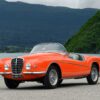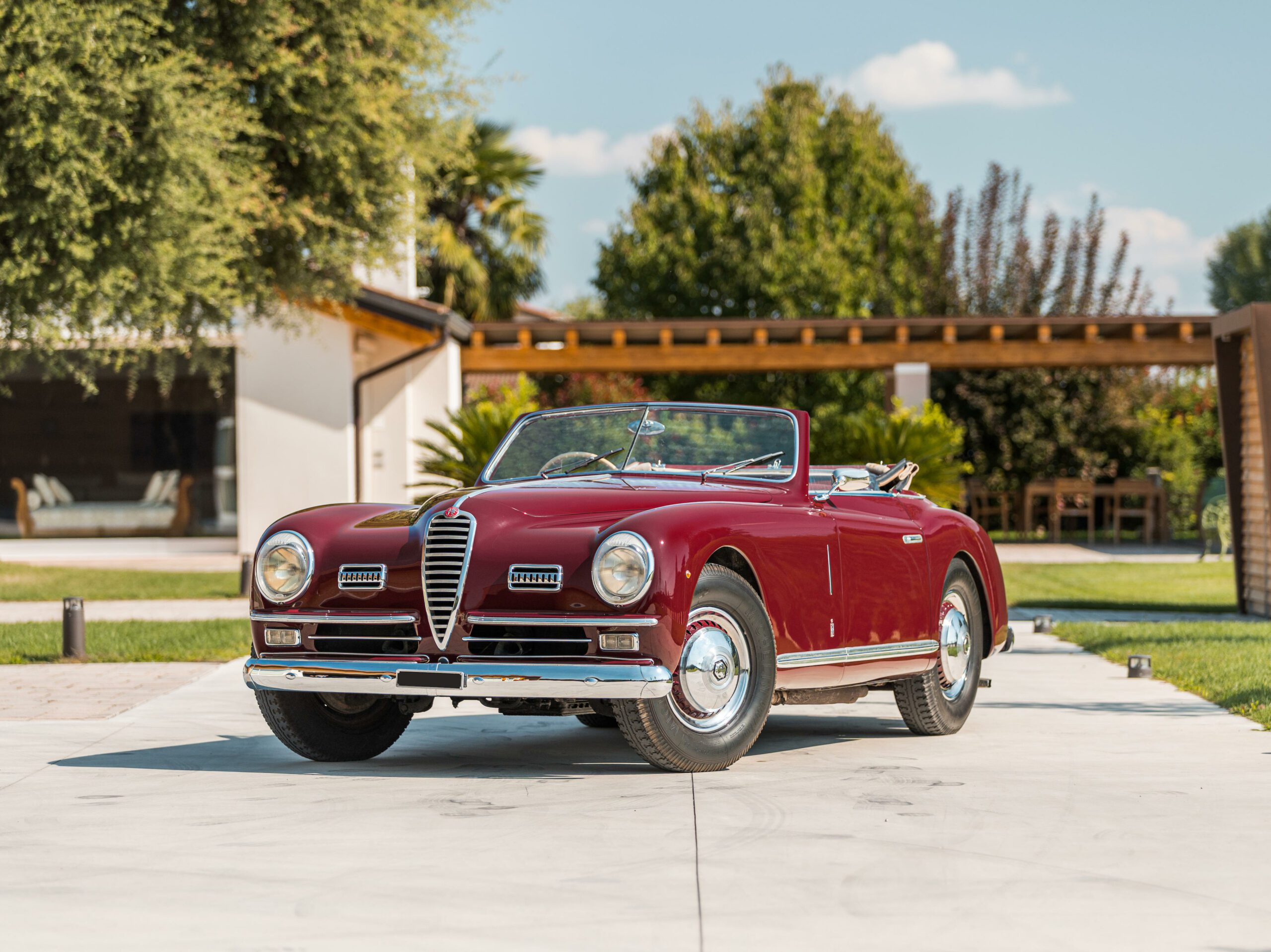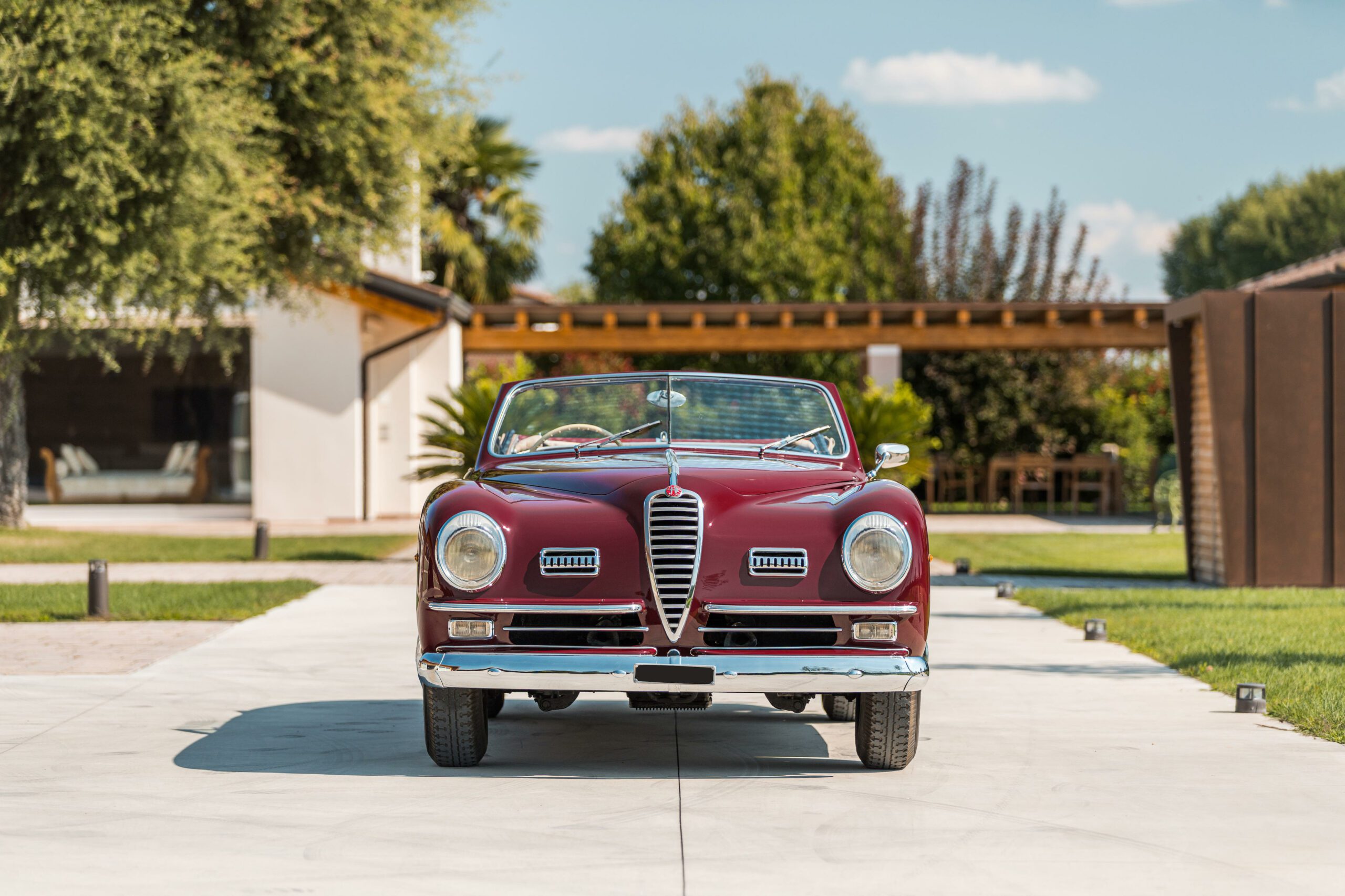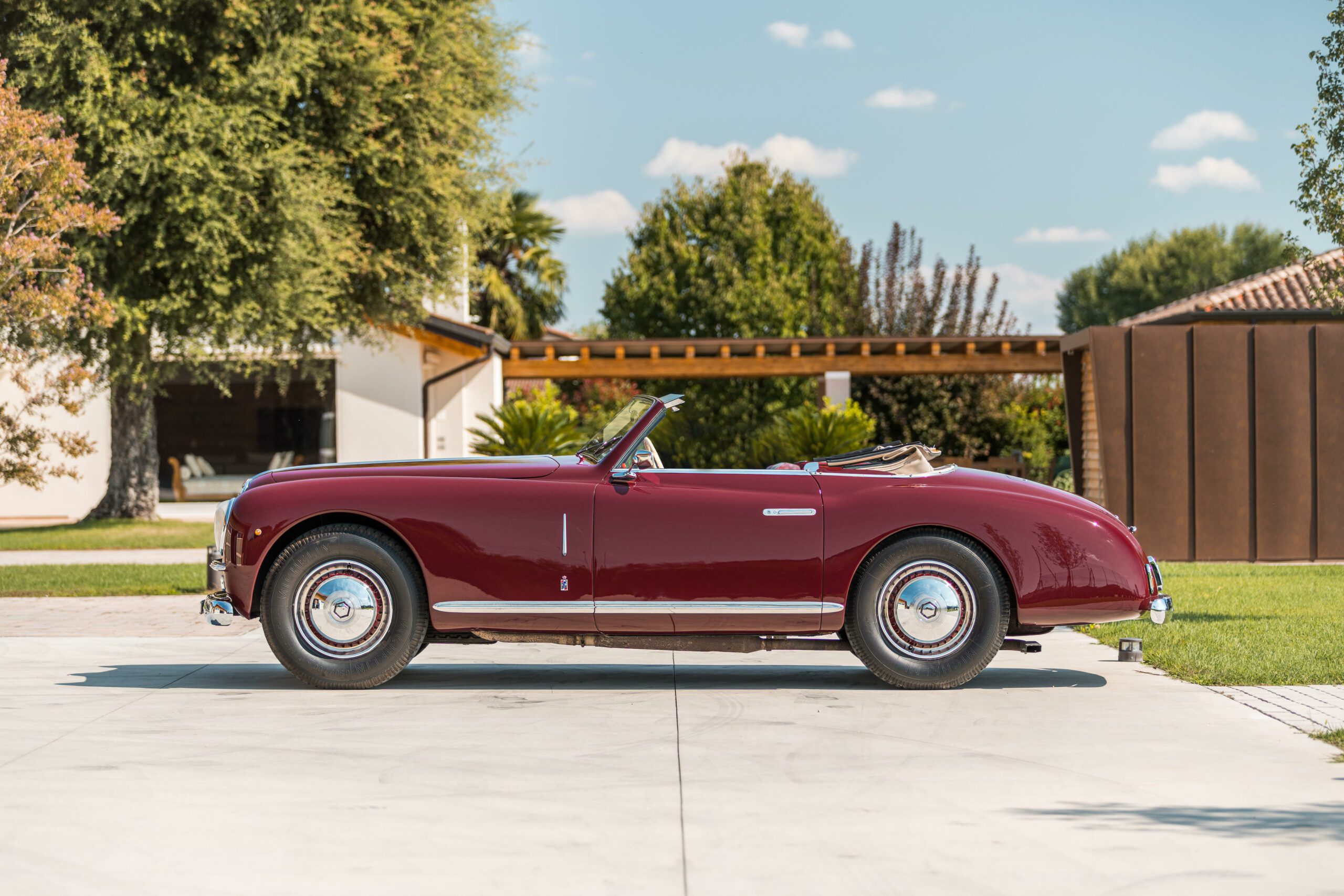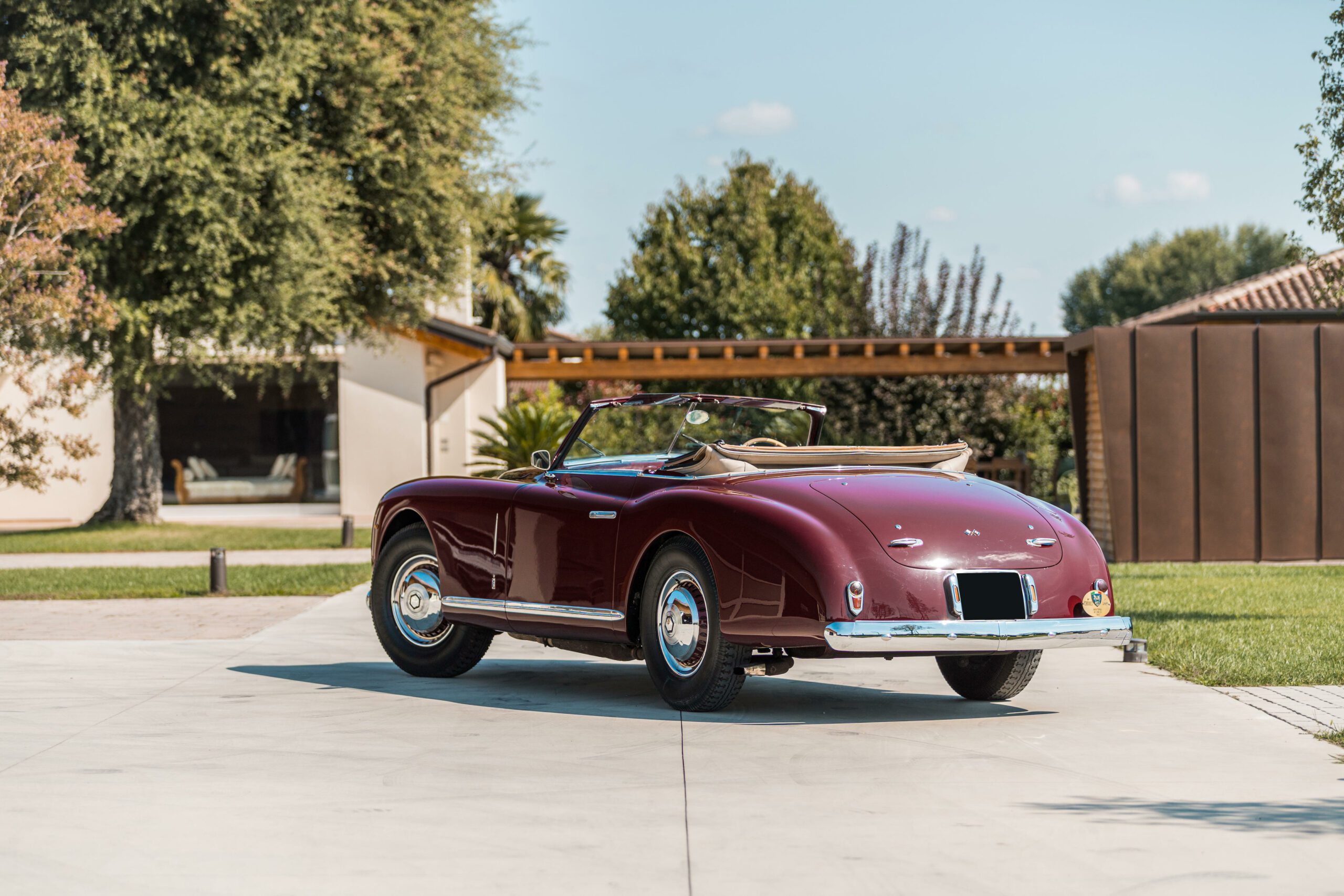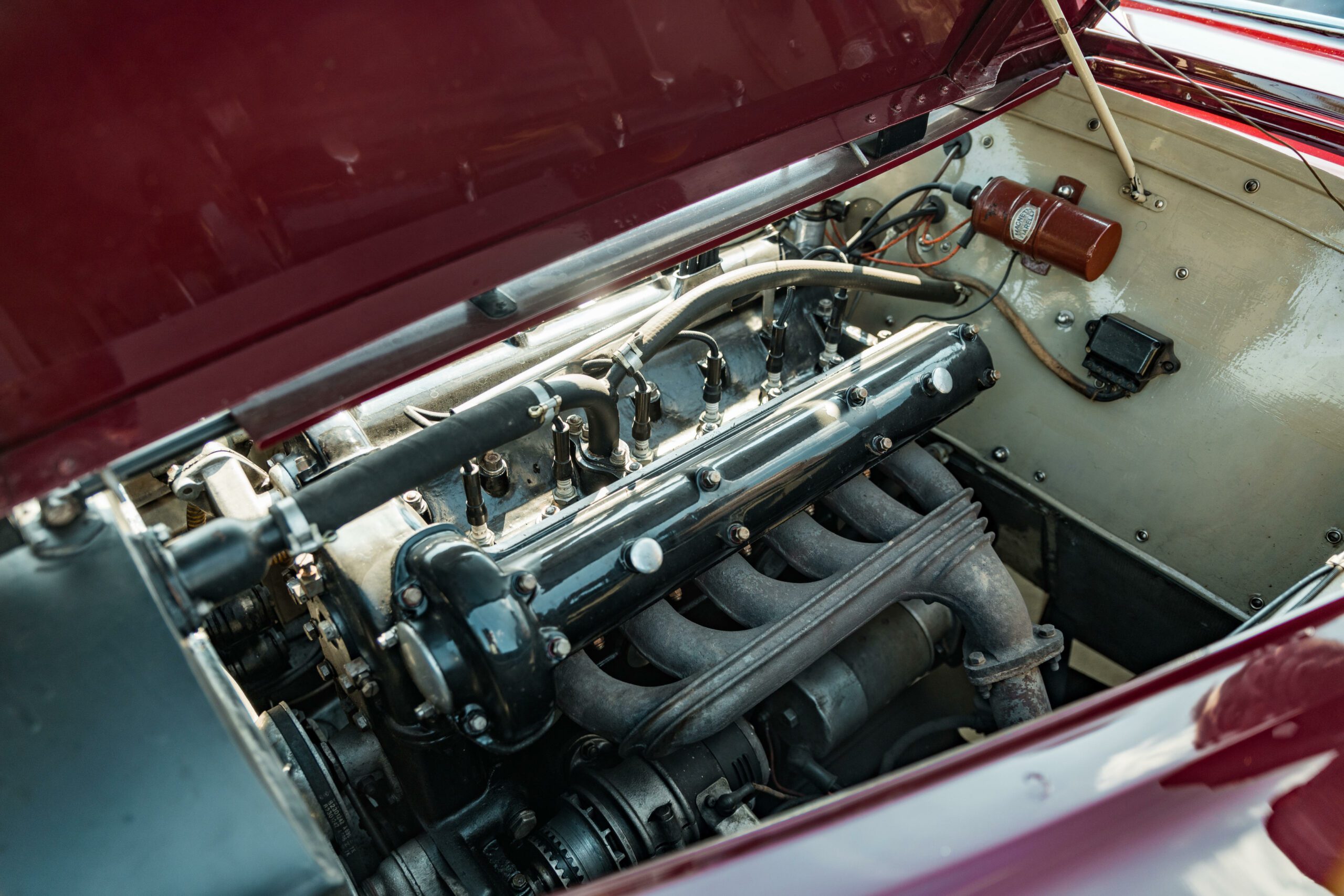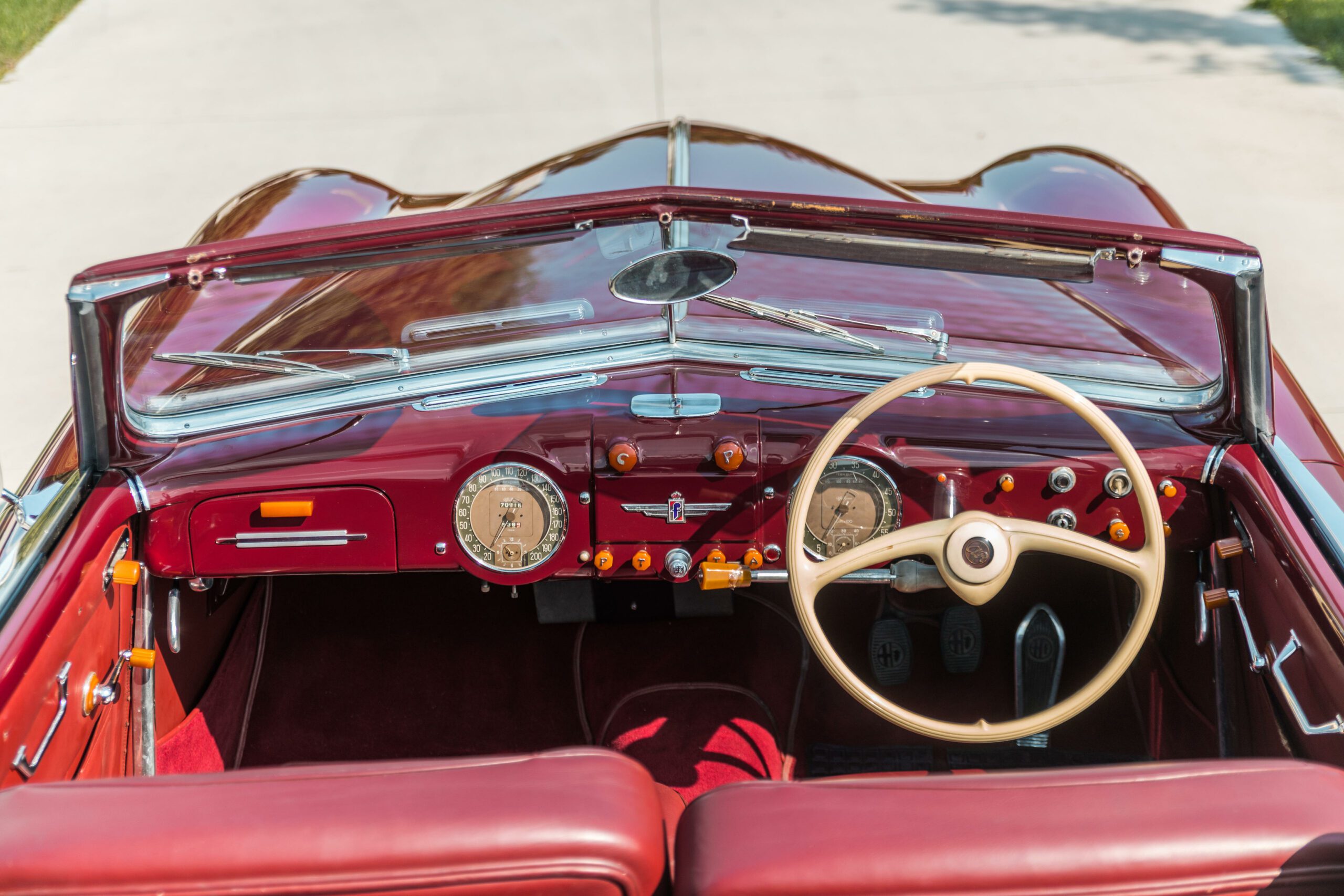Following the wartime devastation of its Portello factory, Alfa Romeo faced a hiatus in car production until 1946. During the post-war recovery, the Milanese marque reintroduced car manufacturing with the 6C 2500, a pre-war model that took on various new forms. Debuting in 1939, the 2500 marked the end of separate-chassis Alfas.
Styled in-house with strong Touring influences, the five-seater Freccia d’Oro sports saloon, alongside coupe and cabriolet versions, formed the core of the post-war lineup. These models featured diverse bodies by renowned designers such as Pinin Farina, Touring, and Ghia. Additionally, a longer wheelbase version offered a six/seven-seater berlina.
Despite the 2500 no longer featuring a state-of-the-art box-section chassis, it continued Alfa’s tradition of crafting exceptional driver’s cars. The car boasted all-independent suspension, generous brakes, fast-geared steering, and a slick column-mounted gearchange. Powering the 2500 was the latest iteration of Alfa’s race-developed double-overhead-camshaft ‘six’, with a 2,443cc displacement derived from enlarging the bore of the 2300. The engine’s power ranged from 90bhp in the single-carburettor Sport version to 105bhp in the triple-carburettor Super Sport, the latter being notably lighter and capable of exceeding 100mph.
Production of the short-wheelbase Super Sport (SS) chassis continued until 1951, with 383 units manufactured. Most were Superleggera coupés by Touring, while the rest received cabriolet coachwork by Pinin Farina.
The featured Alfa Romeo 6C 2500 SS showcases two-seater cabriolet coachwork by Carrozzeria Pinin Farina. In the late 1940s, Pinin Farina’s exceptional creativity flourished, and the 6C 2500 chassis, particularly the Super Sport version, provided the Italian design maestro with the freedom to experiment with new lines and design solutions. Notably, a Pinin Farina 6C 2500 SS earned a 1st place award at the Villa d’Este concours in 1949.
Source: Bonhams Cars




